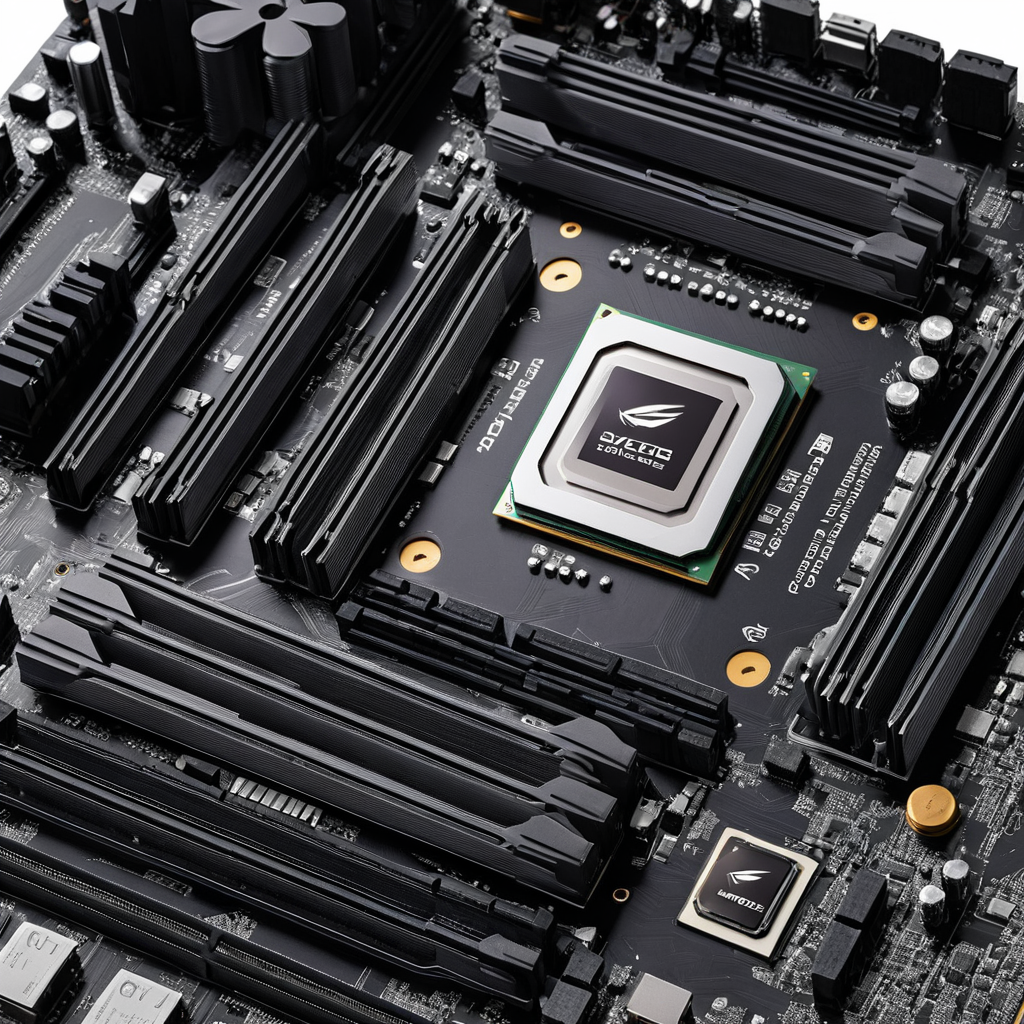- November 14, 2024
The Best Motherboard for Gaming in 2025: A Comprehensive Guide

The Best Motherboard for Gaming in 2025: A Comprehensive Guide
Gaming in 2025 will be more immersive and dynamic than ever before, with cutting-edge hardware designed to push the boundaries of performance. One of the most critical components that determine the overall gaming experience is the motherboard for gaming. As technology evolves, so does the architecture and design of motherboards. In this article, we will explore what makes a gaming motherboard exceptional, focusing on key aspects such as chipset performance, PCIe advancements, memory support, power delivery, and more. Whether you’re a casual gamer or an enthusiast, understanding these features will help you make the best choice for your gaming rig in 2025.

Chipset Performance in 2025 Gaming Motherboards
The chipset is the backbone of any motherboard, determining its compatibility with processors and influencing the overall system performance. In 2025, gaming motherboards will likely feature the latest generation of chipsets such as Intel’s Z900 series or AMD’s X670, providing enhanced power and efficiency. These chipsets will support faster data transfer rates, improved overclocking capabilities, and better management of high-performance components like GPUs and CPUs. For gamers, this means smoother gameplay, reduced latency, and enhanced stability during intensive gaming sessions.
Advancements in PCIe Technology
One of the most exciting developments in gaming motherboards for 2025 is the advancement of PCIe technology. PCIe 5.0 and PCIe 6.0 will become standard, offering significantly faster bandwidth compared to PCIe 4.0. This will be a game-changer for gamers using next-gen GPUs and ultra-fast storage solutions. The increased bandwidth ensures that graphics cards can run at full capacity, reducing bottlenecks and allowing for higher frame rates and quicker load times. As more peripherals and high-speed storage devices require faster data access, these PCIe advancements will be crucial for high-end gaming systems.
Memory Support: DDR5 and DDR6
Memory plays a critical role in gaming performance. In 2025, DDR5 RAM will be the norm, providing faster speeds and increased capacity over DDR4. This means less stuttering and quicker load times in games that require heavy memory usage. Some high-end motherboards may even offer DDR6 compatibility, pushing memory speeds and efficiency even further. A motherboard that supports DDR5 or DDR6 will ensure that your system is future-proof and capable of handling demanding games and applications.
Power Delivery and Overclocking
For gamers who enjoy pushing their hardware to the limit, power delivery and overclocking support are vital. Advanced motherboards in 2025 will feature robust power delivery systems with 12+2 phases or even higher, ensuring that your CPU and GPU receive stable, reliable power even when overclocked. This helps maintain system stability, prevents overheating, and allows for sustained high performance during intense gaming sessions. Overclocking support will also be more user-friendly with built-in AI-driven features that automatically adjust voltage and frequency to optimize gaming performance.
AI-Driven Optimization Features
AI-driven optimization is expected to become a standard feature in motherboards for gaming by 2025. AI will be used to automatically overclock components, optimize power delivery, and even adjust fan speeds based on the workload. This allows gamers to achieve maximum performance without needing to dive deep into manual tuning. With real-time system monitoring, AI will help maintain system stability and efficiency, giving gamers the best experience without the hassle.
Next-Gen I/O Capabilities
As gaming peripherals evolve, next-gen I/O capabilities will become crucial. In 2025, motherboards will feature support for USB 4.0, Thunderbolt 5, and other high-speed interfaces, allowing for lightning-fast data transfer and peripheral connectivity. These technologies will be essential for gaming setups that involve high-resolution displays, external storage devices, and multiple peripherals. The improved I/O speeds will reduce latency and enhance the overall gaming experience by ensuring that data flows smoothly between your PC and its connected devices.
Variable Refresh Rate (VRR) and Cooling Solutions
Variable Refresh Rate (VRR) support will be increasingly integrated into motherboards, ensuring a smoother gaming experience, especially for those with high-end monitors. VRR synchronizes your display’s refresh rate with the GPU’s output, eliminating screen tearing and stuttering. Additionally, advanced cooling solutions will be incorporated into motherboards, with better thermal management and support for liquid cooling setups. This ensures that your system remains cool and stable during long gaming sessions, preventing thermal throttling and maintaining peak performance.
Durability and Longevity Enhancements
Gaming motherboards for 2025 will also see significant improvements in durability and longevity. Enhanced PCB materials, fortified VRM (Voltage Regulator Module) systems, and better heat dissipation mechanisms will ensure that your motherboard stands the test of time, even under heavy use. High-end gaming motherboards will also come with reinforced metal backplates and durable capacitors, providing a more reliable and long-lasting gaming experience.
Wireless Connectivity: Wi-Fi 6E/7 and Bluetooth 5.3
In an increasingly wireless world, Wi-Fi 6E/7 and Bluetooth 5.3 will be essential features in gaming motherboards for 2025. These technologies will provide faster, more reliable internet connections, reducing lag and improving online gaming performance. Bluetooth 5.3 will enable seamless connection with gaming peripherals like headphones, controllers, and even VR headsets. With these wireless capabilities, gamers can enjoy lag-free experiences and better connectivity without the hassle of cables.
Integration with Emerging Gaming Peripherals
As gaming peripherals evolve, integration with emerging gaming peripherals will become increasingly important. 2025 motherboards will offer native support for ultra-fast SSDs, next-gen GPUs, and VR devices, ensuring that they can handle the growing demands of cutting-edge peripherals. Support for M.2 NVMe storage, next-gen graphics cards, and advanced gaming accessories will allow gamers to get the most out of their setup without compatibility issues.
In conclusion, choosing the best motherboard for gaming in 2025 requires careful consideration of several factors, including chipset performance, memory support, power delivery, and the integration of next-gen technologies like PCIe 6.0 and Wi-Fi 7. By focusing on these key features, gamers can build a future-proof, high-performance system capable of handling the most demanding games and applications.